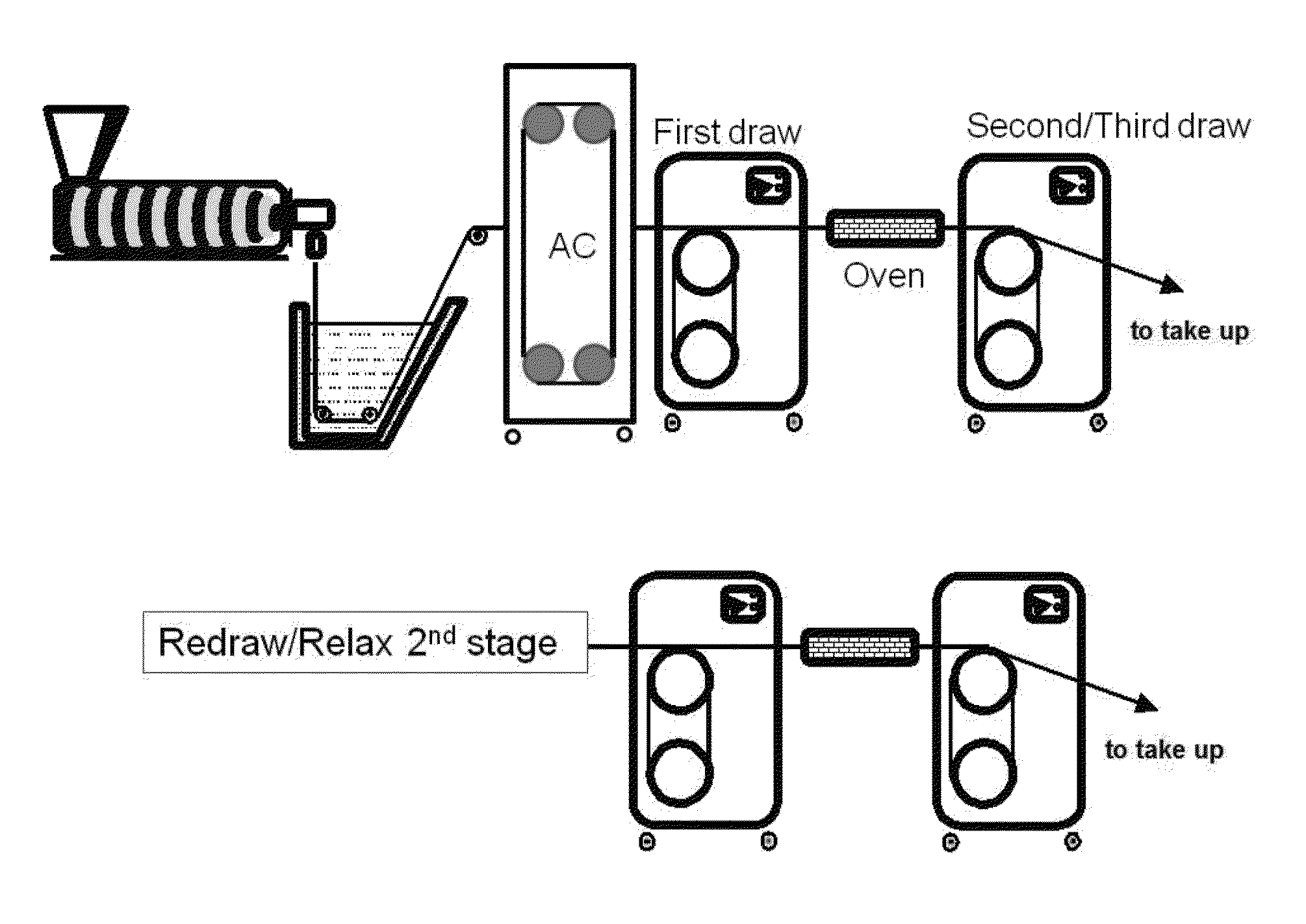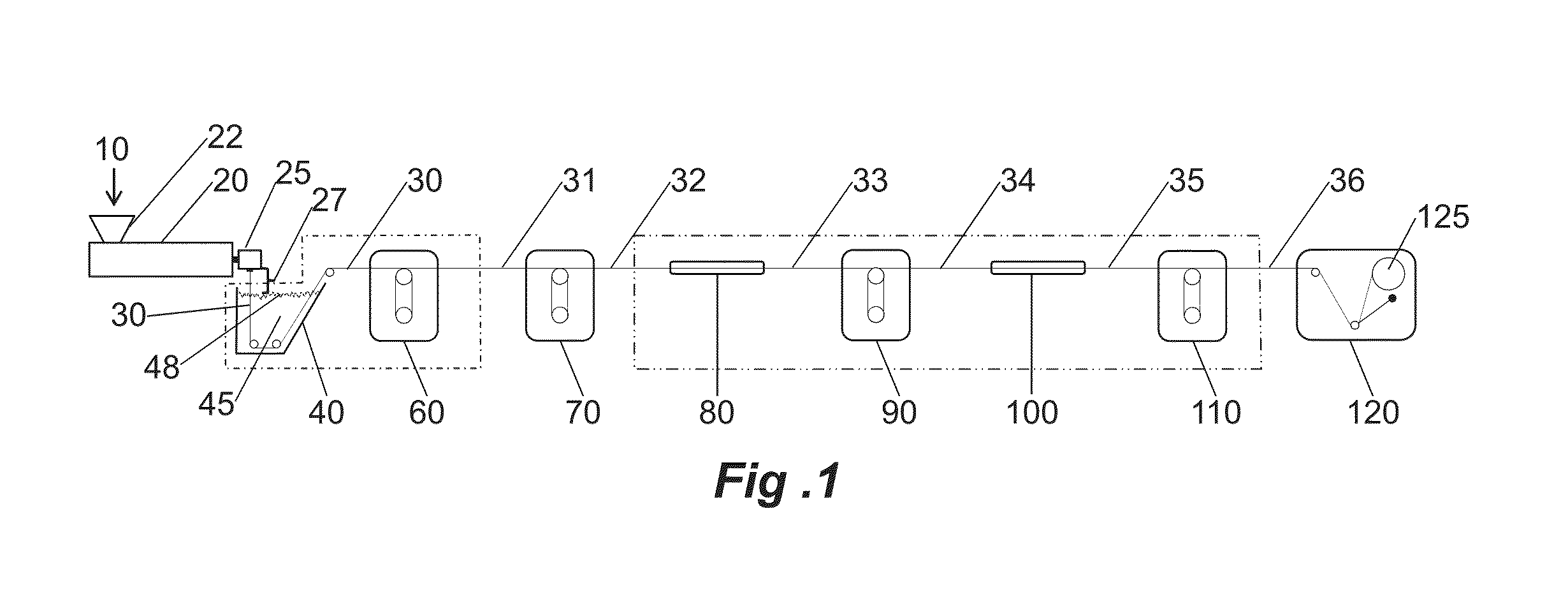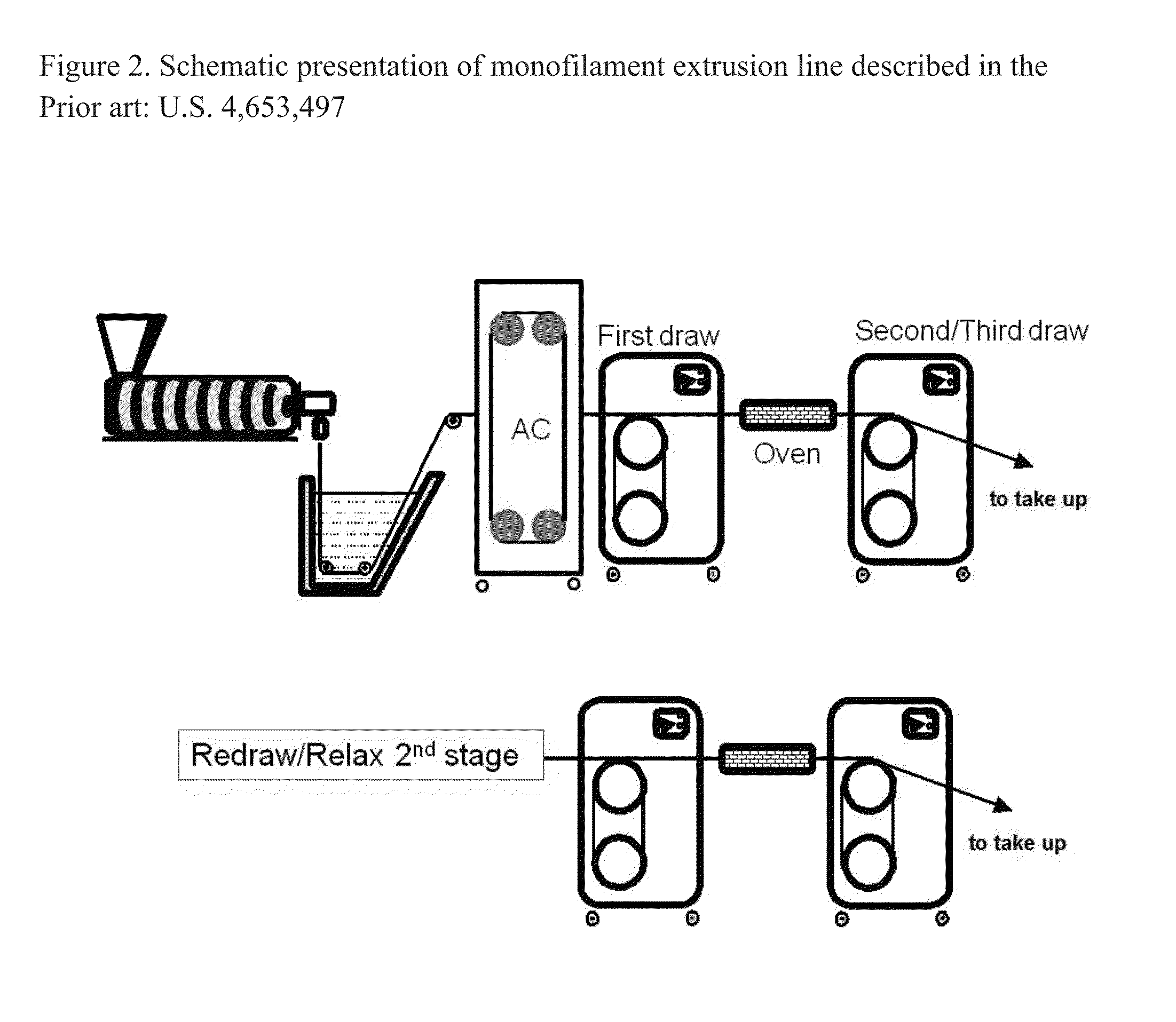Absorbable Poly (p-dioxanone-co-glycolide) Monofilament Fibers Possessing Mid-Term Strength Retention Post-Implantation
a polymer and polymer technology, applied in the field of absorbable monofilament surgical sutures, can solve the problems of significant decrease of infections, decreased biofilm formation at the wound site, and disadvantages of multifilament sutures in certain aspects of their us
- Summary
- Abstract
- Description
- Claims
- Application Information
AI Technical Summary
Benefits of technology
Problems solved by technology
Method used
Image
Examples
example 1
Synthesis of Block 92 / 8 PDO / Gly Copolymer Used in the Present Invention
[0051]A series of PDO / Gly block copolymers were prepared by ring-opening polymerization in a clean, dry, stainless steel, oil-heated, jacketed reactor equipped with a mechanical agitator using stannous octoate (total Tin 29% w / w) at a monomer-to-catalyst mole ratio of 30,000:1, utilizing 50:50 mole ratios of mono-functional initiator, dodecanol (DD), to a difunctional initiator, diethylene glycol (DEG). The monomer-to-total initiator ratio value determines the final molecular weight of the copolymer. Two 92 / 8 PDO / Gly copolymers will be described: a) Example 1A, with a monomer-to-total initiator ratio of 825:1, and, b) Example 1B, with a monomer-to-total initiator ratio of 900:1.
[0052]The polymerization process used in preparation of the PDO / Gly copolymers was a two-step polymerization comprising a first stage homopolymerization using 100% p-dioxanone and a second stage block copolymerization with an added monomer...
example 2
Synthesis of Block 92 / 8 PDO / Gly Copolymer with a Single Initiator—Comparative Example
[0056]The polymerization scheme of this comparative example was identical to that of Example 1 except the initiator used was DEG only. Monomer to initiator ratio was 900:1. The final dried PDO / Gly copolymer resin had the following properties shown in Table 2:
TABLE 2Selected Properties of Dried 92 / 8 PDO / Gly Copolymers Made with a Single InitiatorPolymerizedPolymerizedPDOGlycolideCopolymerIV*MwMI**PDOGlyMonomerMonomerID(dL / g)(g / mol)(g / 10 min)(mole %)(mole %)(mole %)(mole %)Example 21.7565k0.14991.47.50.90.1*Inherent Viscosity was determined in HFIP solution at 25° C. at concentration of 0.1 g / dL.**Weight Average Molecular Weight as determined by GPC***Melt Index measurements (MT987 Extrusion Plastometer, Tinius Olsen, Willow Grove, PA, USA) were conducted at 150° C. using 6,600 g weight disc. The die diameter was 0.0260 inches, while the die length was 0.315 inches.
example 3
Monofilament Extrusion of Block 92 / 8 PDO / Gly Copolymers
[0057]Monofilament extrusion runs of the PDO / Gly block copolymers of Examples 1A and 1B useful in the practice of the present invention were conducted using a one inch Davis-Standard Extruder with a 24:1 barrel length equipped with a single grooved feed throat. The block copolymers were processed in accordance with the method described previously herein and illustrated in FIG. 1. A water bath tank capable of heating up to about 50° C., three sets of orientation godets (with heating capability) with one additional relaxation godet at the end of line prior to a collection spool were utilized. Between the second and third godet, and also between the third godet and the final relaxation godet, were two annealing ovens used to heat the fibers to enhance its polymer morphology. Depending on the particular run (inventive vs. comparative), an air cabinet capable of heating up to 60° C. was optionally used. This piece of equipment was pl...
PUM
| Property | Measurement | Unit |
|---|---|---|
| Temperature | aaaaa | aaaaa |
| Temperature | aaaaa | aaaaa |
| Temperature | aaaaa | aaaaa |
Abstract
Description
Claims
Application Information
 Login to View More
Login to View More - R&D
- Intellectual Property
- Life Sciences
- Materials
- Tech Scout
- Unparalleled Data Quality
- Higher Quality Content
- 60% Fewer Hallucinations
Browse by: Latest US Patents, China's latest patents, Technical Efficacy Thesaurus, Application Domain, Technology Topic, Popular Technical Reports.
© 2025 PatSnap. All rights reserved.Legal|Privacy policy|Modern Slavery Act Transparency Statement|Sitemap|About US| Contact US: help@patsnap.com



